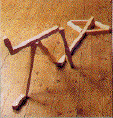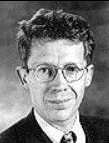
Mercredi 1 mai 2002 La lettre d'information du site baillement.com N°9 (pour profiter des images de cette lettre, il faut lire cette lettre en étant connecté) baillement.com est libre d'accès, base documentaire pour comprendre, chercher, travailler
![]()
- Ronald Baenninger, Department of psychology and biology, Temple University, Philadelphia,Pensylvannia a eu l'amabilité de m'adresser plusieurs de ses écrits sur le bâillement, parus dans des revues américaines non distribuées dans les bibliothèques universitaires françaises. Vous les trouverez en intégralité sur le site ou en téléchargement au format pdf.
- Some comparative aspects of yawning in Betta splendens, Homos sapiens (texte intégral à télécharger )
- Field observations of yawning and activity in humans
- On yawning and its functions (texte intégral à télécharger )
- On the context of yawning: when, where, and why ? (texte intégral à télécharger )
- Some antecedents and consequences of yawning (texte intégral à télécharger )
- Il est réconfortant de penser qu'on a récemment découvert un nouveau neuromédiateur et d'imaginer qu'il en reste d'autres à découvrir pour éclairer les fonctionnements inexpliqués de notre cerveau. En 1998, deux groupes de chercheurs, sans lien entre eux, découvrent simultanément le même neuropeptide, baptisé "hypocretins" par de Lecea et "orexins" par Sakurai. La narcolepsie a maintenant une cause identifiée par défaut en récepteur à hypocrétine. Ce déficit est sans doute la conséquence d'une destruction par pathologie auto-immune.
- Les très intenses interactions de l'hypocrétine avec le système aminergique tant moléculaire que cellulaire lui font jouer un rôle dans la régulation de l'éveil et l'homéostasie de la satiété. Comment ne pas penser que l'hypocretin a sa place dans la neurophysiologie du bâillement ? Vous pouvez lire un nouveau chapitre du site consacré à l'hypocrétine d'après les écrits d' Emmanuel Mignot , spécialiste de la narcolepsie à l'université Stanford .
Découverte d' une nouvelle théorie du rôle immunomodulateur du bâillement !
Andrew McKenzie de l'University of Pretoria , a écrit dans the South African Journal of Science (1994;90:64). "The yawn, is a complex, centrally mediated, muscular contraction which ensures intermittent evacuation of the palatine tonsillar fossae, ensuring that the tonsils are exposed to new antigens and preventing excessive accumulation of foreign material, microorganisms and inflammatory products." L'article complet tiré du British Medical journal est sur le site

- Les travaux de R Provineavaient montré l'absence d'effet déclenchant du bâillement par l'hypoxie, chez l'homme. La neuro-biologie expérimentale tend néanmoins à valider cette piste au niveau du noyau paraventriculaire de l'hypothalamus :
- Kita I., I. Sato-Suzuki, et al. (2000) : "Yawning responses induced by local hypoxia in the paraventricular nucleus of the rat." Behavioural Brain Research 117(1-2): 119 - 126. (texte intégral sur le site )
- Yawing was induced by microinjections of l-glutamate, cyanide and a nitric oxide-releasing compound (NOC12) into the paraventricular nucleus of the hypothalamus (PVN) in anesthetized, spontaneously breathing rats. To evaluate physiological aspects of yawning, we monitored intercostal electromyogram (EMG) as an index of inspiratory activity, digastric EMG, blood pressure and electrocorticogram (ECoG). Microinjection of l-glutamate in the medial parvocellular subdivision (mp) elicited a stereotyped yawning response, i.e. an initial depressor response and an arousal shift in ECoG followed by a single large inspiration with mouth opening. The same sequential events were observed during spontaneous yawning, indicating that the mp is responsible for triggering yawning. Microinjection of cyanide into the mp caused the same yawning responses as the ones elicited by microinjection of l-glutamate, suggesting that the mp is sensitive to chemical hypoxia or ischemia within the PVN. Microinjection of NOC12 into the mp elicited a single large inspiration with a variable onset delay, suggesting that diffusible nitric oxide (NO) within the mp may act as a paracrine agent to cause a yawning response. We hypothesize that the mp of the PVN contains an oxygen sensor that causes a yawning response.

- Les documents mis en ligne ce mois -ci :
- On Yawning Montagu A , article historique souvent cité publié en 1962
- Ethological study of yawning in primates Deputte BL
- A Genotypic dependency of spontaneous yawning frequency in the rat Urba-Holmgren R, Trucios N
- Role of the Lateral Preoptic Area in Sleep-Related Erectile Mechanisms and Sleep Generation in the Rat
- Yawning in pharyngeal obstruction Evans EB
- Fluoxetine-induced yawning and anorgasmia reversed by cyproheptadine treatment Cohen AJ
- The yawning reflex: An upper motor neuron sign in amyotrophic lateral sclerosis Williams DR
- Progressive dysautonomia in hemangioblastoma in the region of the fourth ventricle Arai K, Kita K
au 30 avril 2002
Nombre de questiuonnaires remplis : 333
Combien de fois bâillez-vous par jour ? <5 = 25,8%.. 5-10 = 26,7%.. 10-15 = 13,8%.. 15-20 = 9,9%.. >20 = 23,7%
Ressentez-vous des baillements excessifs ?
- 77,8% = non, tant
mieux
24,9% = oui et je ne sais pas pouquoi - 8,1% = oui et je prends des antidépresseurs
- 1,8% = oui et je prends
des anti-épileptiques
5,1% = oui et je prends d'autres médicaments
2,7% = oui et j 'ai des troubles neurologiques
1,8% = oui et j 'ai des troubles hormonaux
4,8% = oui et j 'ai des tics moteurs
2,7% = oui et j 'ai des tocsdéclenchez-vous facilement le bâillement d'autrui ? 72,1%
êtes-vous sensible au bâillement d'autrui ? 73,9%
L'actualité
- HL Mencken :
- « Des explications existent ; elles ont existé de tout temps, parce qu'il y a toujours une solution simple à chaque problème humain, une solution nette plausible et fausse »
Dr Olivier Walusinski auteur du site
courriel à adresser
